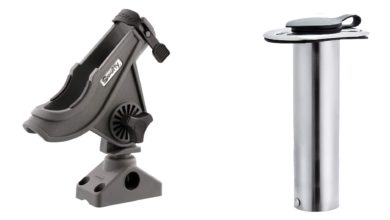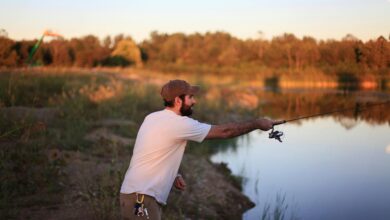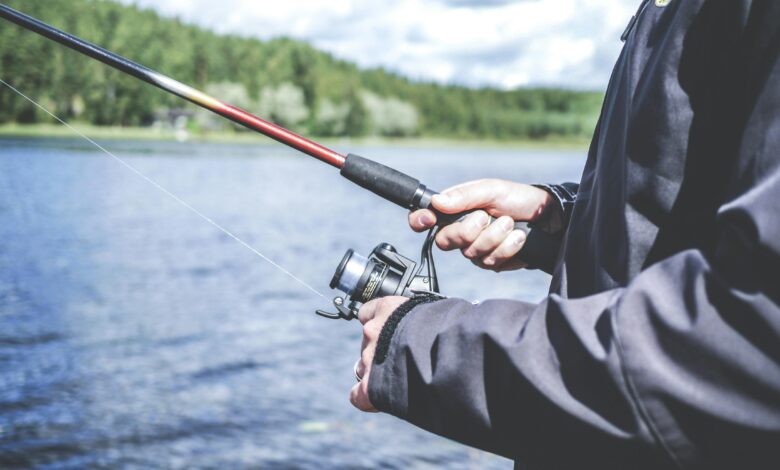
Fishing is a beloved pastime that offers relaxation, adventure, and the thrill of the catch. Whether you’re an experienced angler or just starting, knowing the best places to fish and how to store your catch properly can make all the difference. Here, we explore some of the world’s top fishing destinations and provide essential tips on keeping your fish fresh.
6 Top Fishing Destinations in the World
1. Kenai River in Alaska, USA
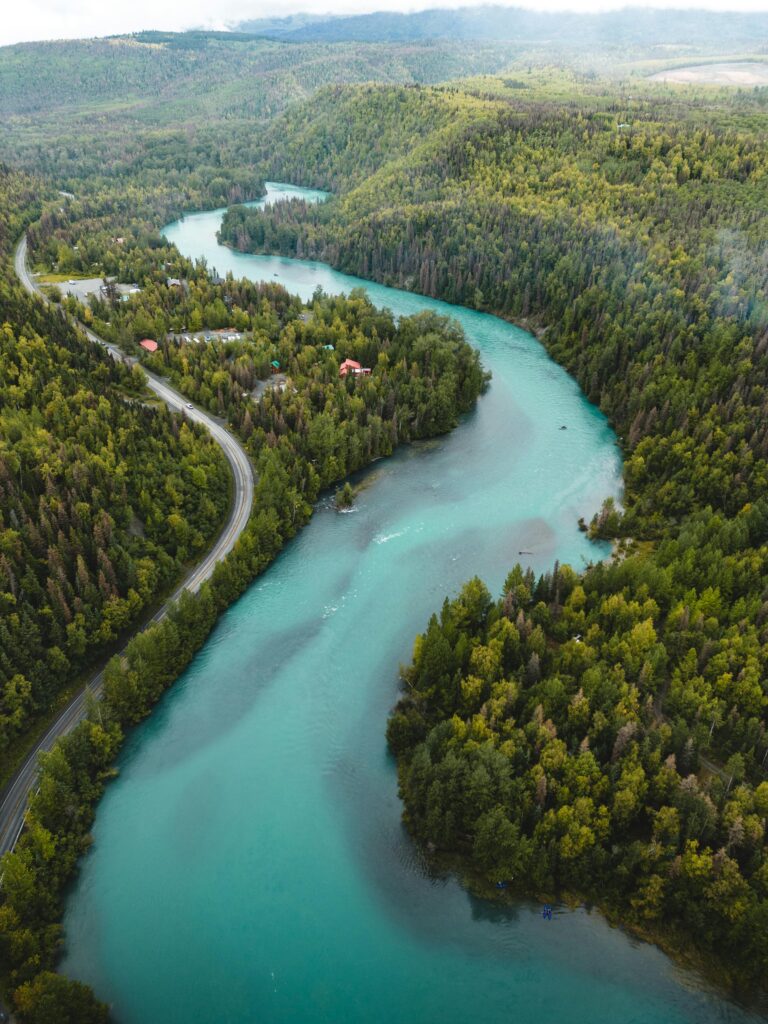
Flowing through the rugged Alaskan wilderness, Kenai River is the home of the record-breaking king salmon. Anglers from around the world visit to battle massive Chinook, vibrant sockeye, and trophy-sized trout. The river’s stunning blue-green waters, fed by glacial melt, provide a breathtaking backdrop for fishing adventures.
- Fish Species: King salmon (Chinook), sockeye salmon, rainbow trout, and Dolly Varden.
- Expected Budget: A guided fishing trip can range from $250-$500 per day, while all-inclusive lodge packages cost $3,000-$6,000 per week.
- Random Fact: The largest king salmon ever caught in the Kenai River weighed 97 pounds and 4 ounces, a world record!
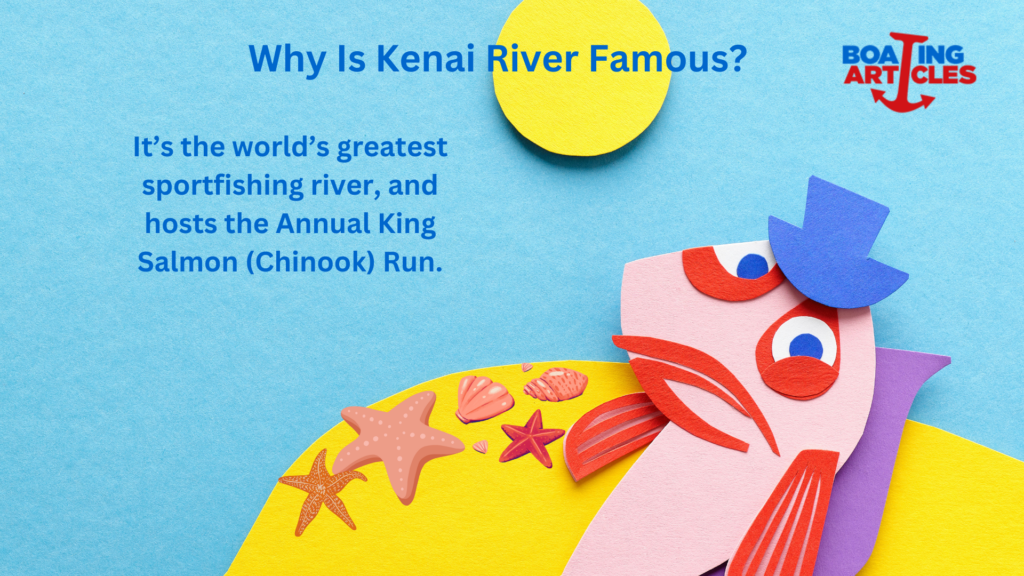
Best Times to Fish (By Species)
| Species | Best Months | Peak Time |
|---|---|---|
| King Salmon (Chinook) | Mid-May – Late July | Late June – Mid-July |
| Sockeye Salmon (Red) | Mid-June – Early August | Mid-July |
| Coho Salmon (Silver) | Mid-August – October | September |
| Pink Salmon (Even Years Only) | Mid-July – Early August | Late July |
| Rainbow Trout | June – October | September – October |
| Dolly Varden | June – October | August – September |
Best Fishing Spots on the Kenai River
1. Upper Kenai River (Kenai Lake to Skilak Lake)
✅ Best for: Fly fishing, Rainbow Trout, Dolly Varden, Sockeye Salmon
✅ Top Spots: Russian River Confluence, Sportsman’s Landing
✅ Why?
- Crystal-clear water, ideal for sight fishing trout and salmon.
- No motorboats allowed = quiet and peaceful fishing.
- Russian River Ferry Access makes it easy to reach top fishing holes.
2. Middle Kenai River (Skilak Lake to Soldotna)
✅ Best for: King Salmon, Sockeye, Coho, Rainbow Trout, Dolly Varden
✅ Top Spots: Bing’s Landing, Centennial Park, Naptowne Rapids
✅ Why?
- Some of the biggest Rainbow Trout in Alaska.
- Good mix of boat and shore fishing options.
3. Lower Kenai River (Soldotna to Cook Inlet)
✅ Best for: King Salmon, Sockeye, Coho, Pink Salmon (even years)
✅ Top Spots: Kenai River Flats, Pillars Boat Launch, Cunningham Park
✅ Why?
- Shelters the world-record 97 lb and 4 oz King Salmon.
- Ideal for guided fishing charters.
2. Great Barrier Reef in Australia
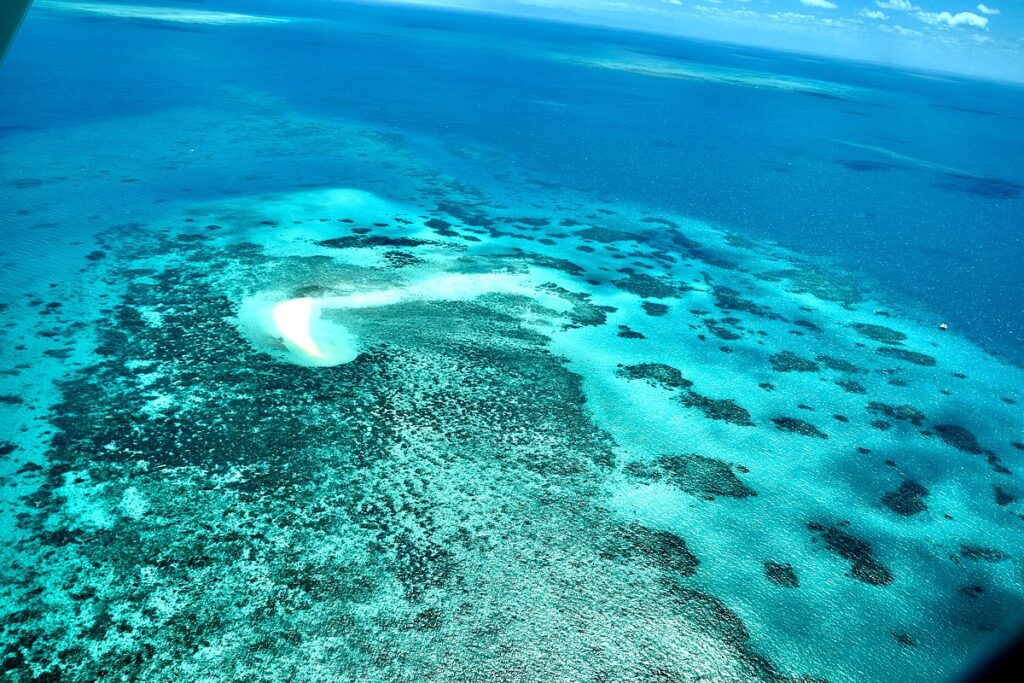
As the world’s largest coral reef system, the Great Barrier Reef offers some of the best deep-sea fishing opportunities on the planet. Anglers can target massive black marlin, tuna, and barracuda while fishing in crystal-clear tropical waters. Whether you’re trolling offshore or dropping lines over the reef, this UNESCO World Heritage site promises an unforgettable experience.
- Fish Species: Black marlin, giant trevally, yellowfin tuna, and barracuda.
- Expected Budget: Charter boats range from $1,500-$3,000 per day, while luxury liveaboard trips can exceed $10,000 per week.
- Random Fact: The Great Barrier Reef is so massive that it can be seen from space and is home to over 1,500 fish species.
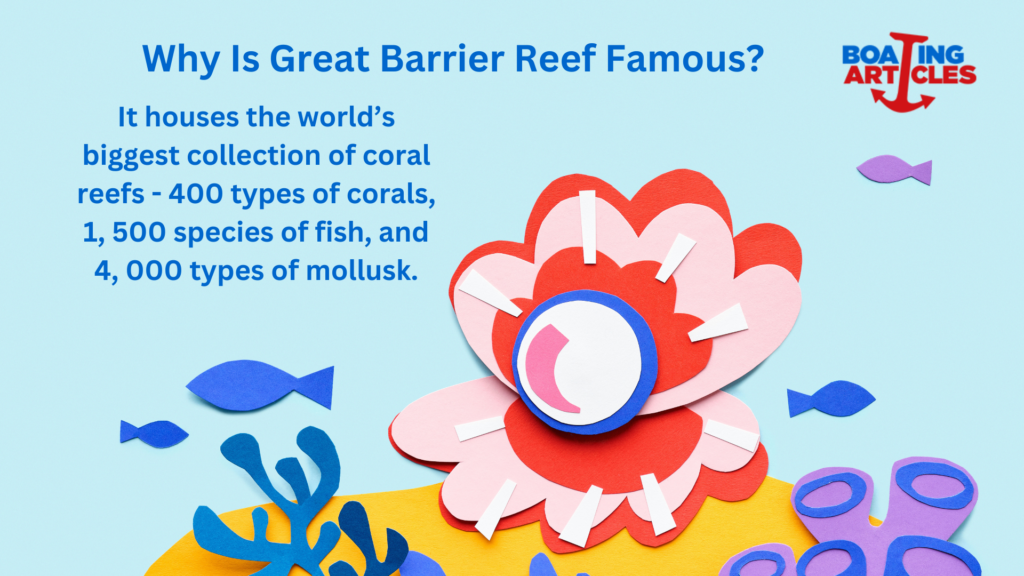
Best Times to Fish (By Species)
| Species | Best Months | Peak Time |
|---|---|---|
| Black Marlin | September – December | October – November |
| Giant Trevally (GT) | Year-round | October – April |
| Coral Trout | Year-round | April – September |
| Spanish Mackerel | April – October | June – August |
| Red Emperor | March – November | May – October |
| Barramundi (Inshore) | February – November | March – May |
| Sailfish | July – November | August – October |
| Yellowfin Tuna | March – September | April – June |
Best Fishing Spots on the Great Barrier Reef
1. Cairns & Lizard Island (Northern GBR)
✅ Best for: Black Marlin, Giant Trevally, Coral Trout, Spanish Mackerel
✅ Why?
- World-famous Black Marlin fishing.
- Pristine reefs with massive GTs and Coral Trout.
- Popular among deep-sea anglers and sport fishers.
2. Ribbon Reefs (North of Cairns)
✅ Best for: Marlin, Sailfish, Yellowfin Tuna, Dogtooth Tuna
✅ Why?
- Legendary Marlin fishing hotspot
- Deep drop-offs = big pelagic fish
- Remote and less pressured waters
3. Townsville & Magnetic Island (Central GBR)
✅ Best for: Spanish Mackerel, Coral Trout, Red Emperor
✅ Why?
- Close to the reef, great for day trips.
- Diverse fishing – offshore for pelagics, inshore for reef fish.
- Good for both beginner and expert anglers.
4. Mackay & The Whitsundays (Southern GBR)
✅ Best for: Reef fishing (Coral Trout, Red Emperor, Nannygai), Sailfish
✅ Why?
- Stunning protected waters with excellent reef fishing.
- Island hopping + fishing combo for an amazing experience.
- Good land-based fishing options.
5. Hervey Bay & Fraser Island (Southern GBR)
✅ Best for: Barramundi, Golden Trevally, Tuna, Snapper
✅ Why?
- One of the best inshore fisheries in Australia.
- Famous for light tackle fishing for Trevally and Tuna.
- Good mix of estuaries, flats, and offshore reefs.
3. Amazon River in Brazil
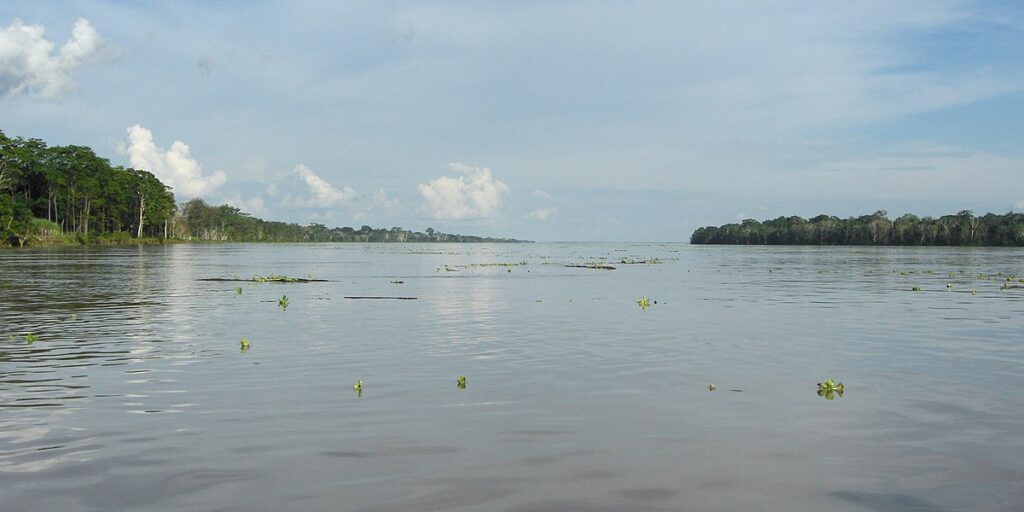
For those seeking adventure, the Amazon River provides an exotic fishing experience unlike any other. Home to aggressive peacock bass, razor-toothed piranhas, and gigantic catfish, this river teems with legendary freshwater monsters. Surrounded by dense rainforest and diverse wildlife, fishing here is as much about the environment as the catch.
- Fish Species: Peacock bass, red-bellied piranha, giant catfish (Piraíba), and arapaima.
- Expected Budget: Guided fishing expeditions cost around $3,000-$5,000 per week, including accommodation and food.
- Random Fact: The Amazon River is home to the largest freshwater fish in the world, the arapaima, which can grow over 10 feet long.
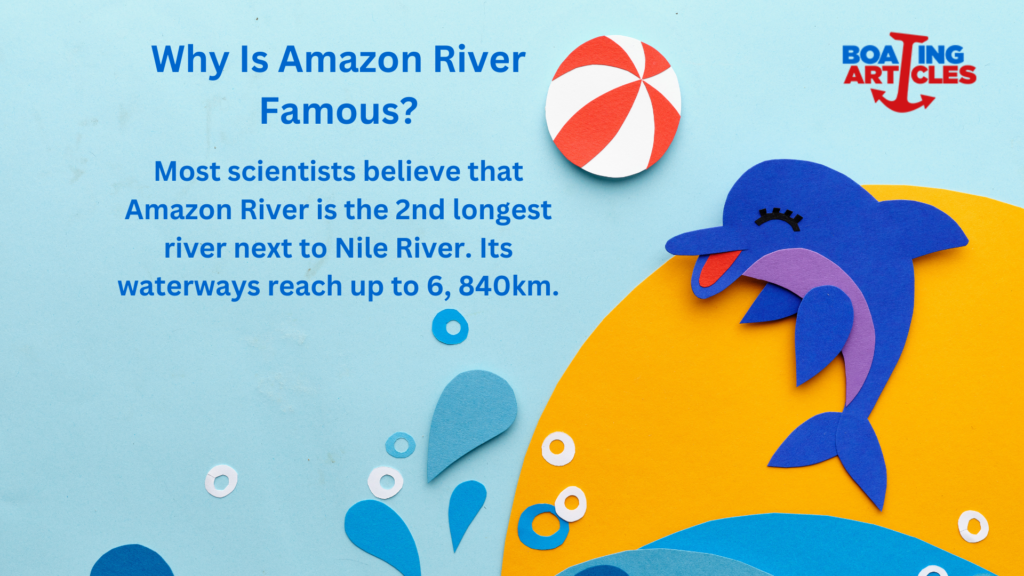
Best Times to Fish (By Species & Water Levels)
The Amazon’s water levels significantly impact fishing. The best fishing occurs during the dry season, when lower water levels concentrate fish in deeper channels and lagoons.
| Species | Best Months | Peak Time |
|---|---|---|
| Peacock Bass | July – November | August – October |
| Arapaima (Pirarucu) | July – November | August – October |
| Piranha | Year-round | Dry season (July – November) |
| Redtail Catfish | Year-round | Wet season (December – May) |
| Payara (Vampire Fish) | July – November | August – October |
| Tambaqui & Pacu | September – December | Late dry season (October – November) |
| Gilded & Piraíba Catfish | December – May | High water season (March – May) |
🟢 Best Season for Most Fishing: July – November (dry season)
🔵 Best Season for Gilded & Piraíba Catfish: December – May (high water season)
Best Fishing Spots on the Amazon River
1. Rio Negro (Brazil)
✅ Best for: Peacock Bass, Piranha, Arapaima, Payara
✅ Why?
- Peacock bass paradise (up to 25 lbs!).
- Blackwater rivers = fewer mosquitoes & clearer fishing.
- Famous fishing lodges and guided trips available.
2. Rio Madeira (Brazil)
✅ Best for: Giant Catfish (Piraíba & Redtail), Peacock Bass
✅ Why?
- One of the best rivers for monster catfish.
- Strong peacock bass population.
- Less touristy than Rio Negro.
3. Mamirauá Reserve (Brazil)
✅ Best for: Arapaima, Piranha, Tambaqui
✅ Why?
- Protected waters = giant arapaima (over 400 lbs!).
- Best fly fishing and catch-and-release program.
- Great for wildlife spotting (pink dolphins, caimans).
4. Ucayali River (Peru)
✅ Best for: Arapaima, Peacock Bass, Piranha
✅ Why?
- One of the best places to catch wild arapaima.
- Lush, remote jungle setting.
- Mix of fly fishing and conventional fishing options.
5. Orinoco Basin (Colombia & Venezuela)
✅ Best for: Payara, Peacock Bass, Catfish
✅ Why?
- Top spot for Payara (“Vampire Fish”).
- Good variety of Amazonian fish species.
- Untouched fishing grounds with incredible scenery.
4. Florida Keys, USA
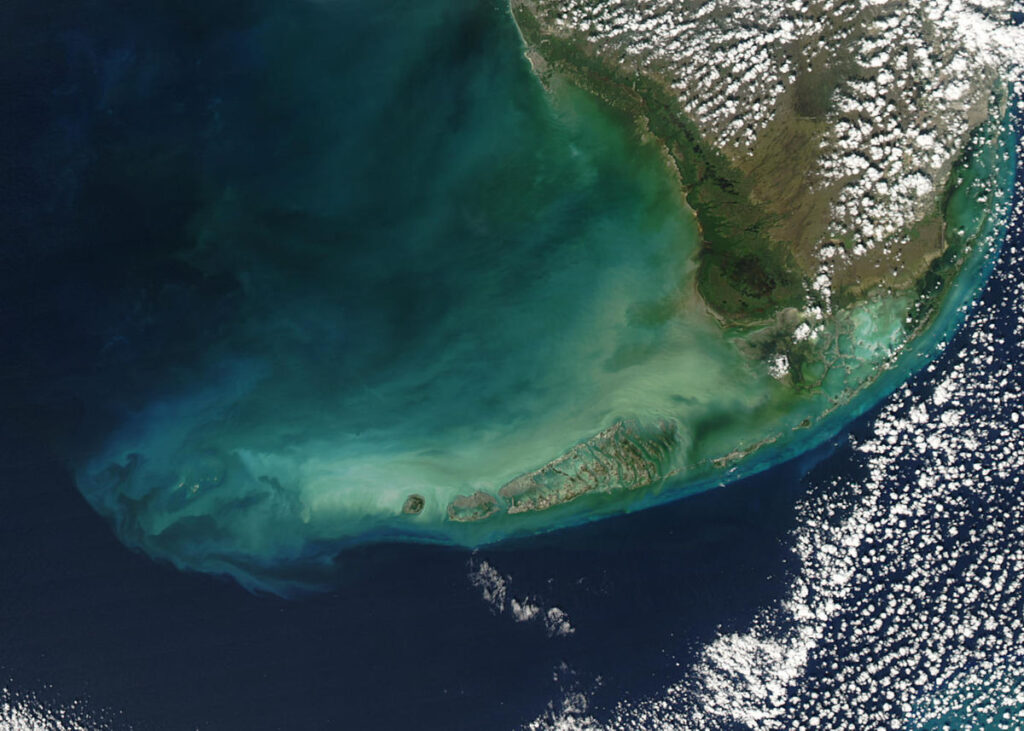
The Florida Keys are a paradise for sportfishing, where warm waters meet a diverse ecosystem of game fish. Whether you’re battling tarpon in the flats, chasing bonefish on the fly, or heading offshore for snapper, the fishing opportunities here are endless. With stunning tropical scenery and a laid-back island vibe, it’s a bucket-list destination for any angler.
- Fish Species: Tarpon, bonefish, permit, snook, and snapper.
- Expected Budget: A half-day charter costs around $500-$800, while multi-day luxury fishing trips can cost $5,000+.
- Random Fact: The Florida Keys are known as the “Sportfishing Capital of the World”, with year-round fishing opportunities.
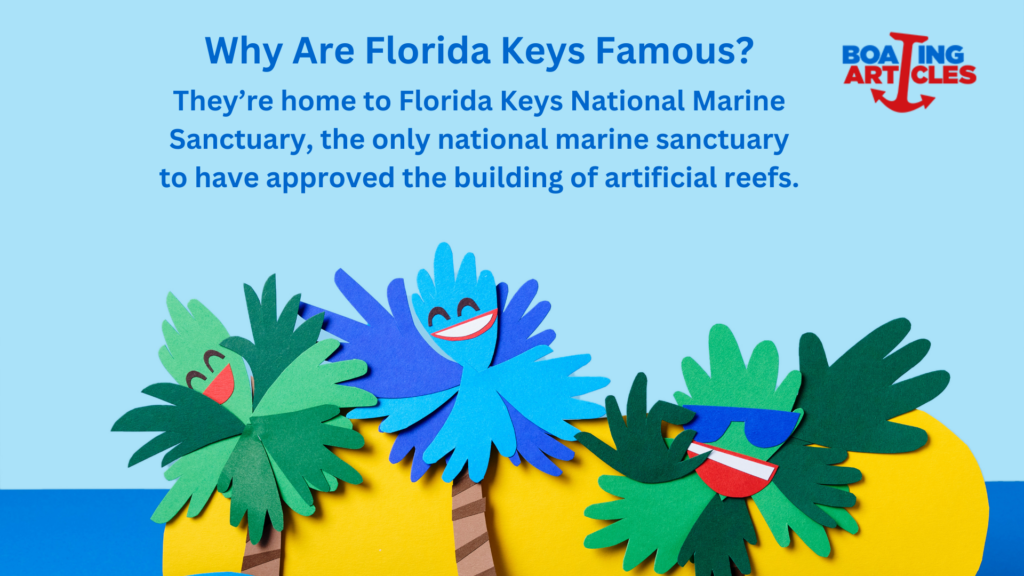
Best Times to Fish (By Species & Season)
| Species | Best Months | Peak Time |
|---|---|---|
| Tarpon | March – July | April – June |
| Bonefish | March – November | April – October |
| Permit | March – October | May – September |
| Snook | Year-round | Spring & Fall |
| Redfish | Year-round | Fall – Winter |
| Mahi-Mahi (Dolphin Fish) | April – September | May – July |
| Sailfish | November – April | December – March |
| Wahoo | November – March | Winter months |
| Grouper | May – December | Summer – Fall |
| Snapper (Mangrove, Yellowtail, Mutton) | Year-round | Spring & Summer |
| Marlin (Blue & White) | April – September | June – August |
🟢 Best Overall Time: Spring & Summer (March – July) for inshore, Fall & Winter (November – March) for offshore species.
Best Fishing Spots in the Florida Keys
1. Key West
✅ Best for: Tarpon, Permit, Sailfish, Mahi-Mahi, Wahoo
✅ Why?
- Legendary offshore and inshore fishing.
- Peak Tarpon migration in spring.
- Excellent deep-sea fishing for Sailfish, Marlin, and Mahi.
📍 Top Fishing Areas:
- Key West Harbor (Tarpon hotspot)
- Marquesas Keys (Permit & Bonefish paradise)
- The Wall (Deep-sea drop-off for Marlin & Wahoo)
2. Islamorada (Sportfishing Capital of the World)
✅ Best for: Tarpon, Bonefish, Permit, Sailfish, Snook
✅ Why?
- Best flats fishing in the Keys (Bonefish, Permit, Tarpon).
- Great deep-sea action for Sailfish & Mahi.
- Famous backcountry fishing in Florida Bay.
📍 Top Fishing Areas:
- Channel 2 & 5 Bridges (Huge Tarpon)
- Everglades National Park (Snook & Redfish)
- Islamorada Humps (Mahi & Tuna feeding zone)
3. Marathon (Middle Keys)
✅ Best for: Tarpon, Grouper, Snapper, Mahi-Mahi
✅ Why?
- Best bridge fishing for Tarpon & Snapper.
- Shallow wrecks and reefs full of Grouper & Snapper.
- Easy access to offshore waters for Mahi.
📍 Top Fishing Areas:
- Seven Mile Bridge (Tarpon & Snapper hotspot)
- The Hump (Deep-sea Mahi, Tuna, Sailfish)
- Sombrero Reef (Lobster & Grouper fishing)
4. Big Pine Key & Lower Keys
✅ Best for: Bonefish, Permit, Tarpon, Snapper
✅ Why?
- Less crowded, pristine flats fishing.
- Amazing wreck fishing for Grouper & Snapper.
- Good access to bluewater fishing.
📍 Top Fishing Areas:
- Content Keys (Bonefish & Permit flats)
- The Drop (Deep-sea fishing spot)
- Looe Key (Snorkeling + fishing combo)
5. Dry Tortugas (Remote & Pristine Fishing)
✅ Best for: Grouper, Snapper, Tuna, Wahoo
✅ Why?
- One of the best deep-sea & reef fishing spots in the world.
- Huge Mutton Snapper, Black Grouper, and Tuna.
- Requires a long boat trip but worth it.
📍 Top Fishing Areas:
- Fort Jefferson Waters (Big Snapper & Grouper)
- Pulley Ridge (Deep-water bottom fishing)
5. Norwegian Fjords, Norway
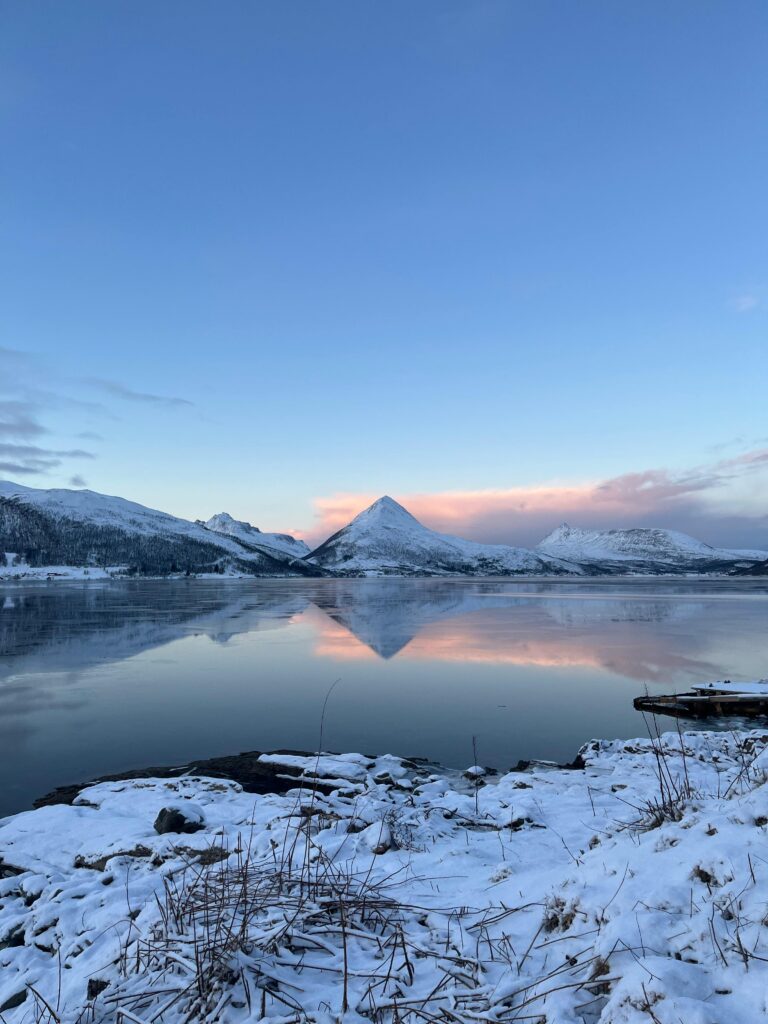
Known for its breathtaking scenery and cold-water species like cod, halibut, and Arctic char, fishing in the Norwegian Fjords is an experience straight out of a postcard, with towering cliffs and deep, icy waters. The combination of breathtaking scenery and world-class fishing makes it a dream destination for anglers.
- Fish Species: Atlantic cod, halibut, coalfish, and Arctic char.
- Expected Budget: Boat rentals start at $200 per day, while guided trips can cost $1,000-$2,500 per week.
- Random Fact: Norway’s deep fjords offer some of the best cold-water fishing in the world, and cod from these waters is a key ingredient in bacalhau, a famous Portuguese dish.
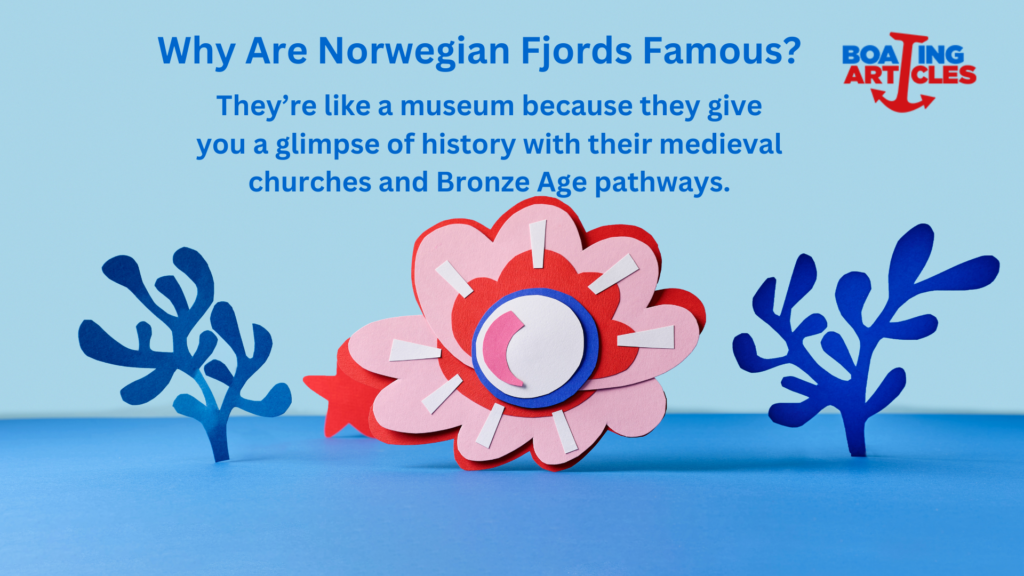
Best Times to Fish (By Species & Season)
| Species | Best Months | Peak Time |
|---|---|---|
| Cod (Skrei Cod) | February – April | March |
| Coalfish (Saithe) | May – September | June – August |
| Halibut | April – October | August – October |
| Atlantic Salmon | June – August | July |
| Pollock | April – October | Summer |
| Haddock | Year-round | Winter months |
| Mackerel | June – September | July – August |
🟢 Best Overall Time for Most Fishing: Spring to Autumn (April – October)
🔵 Best Time for Skrei Cod: Winter (February – April)
Best Fishing Spots in the Norwegian Fjords
1. Lofoten Islands & Vestfjorden
✅ Best for: Skrei Cod, Halibut, Coalfish
✅ Why?
- Famous Skrei Cod migration in winter.
- Stunning scenic fjords & deep waters.
- Rich marine ecosystem for big fish.
📍 Top Fishing Areas:
- Svolvær (Cod & Halibut hotspot)
- Reine & Å (Great for shore & boat fishing)
- Henningsvær (Excellent for Coalfish)
2. Trondheimsfjord
✅ Best for: Halibut, Pollock, Haddock, Cod
✅ Why?
- Longest fjord in Norway with varied fishing.
- Deep waters = Big Halibut & Cod.
- Calm conditions for year-round fishing.
📍 Top Fishing Areas:
- Agdenes (Great Halibut fishing)
- Frosta (Cod & Pollock hotspot)
- Trondheim coastline (Shore & boat fishing options)
3. Sognefjord (Norway’s Deepest Fjord)
✅ Best for: Coalfish, Salmon, Mackerel, Cod
✅ Why?
- Deepest fjord in Norway = Big game fish.
- Great mix of saltwater & freshwater fishing.
- Accessible from Bergen & central Norway.
📍 Top Fishing Areas:
- Lærdal River (One of Norway’s best Salmon rivers)
- Balestrand (Good for Mackerel & Pollock)
- Aurlandsfjord (Scenic fjord fishing for Cod & Coalfish)
4. Hardangerfjord
✅ Best for: Pollock, Mackerel, Cod, Salmon
✅ Why?
- Good for both boat & shore fishing.
- Easy access from Bergen.
- Summer fishing paradise.
📍 Top Fishing Areas:
- Øystese (Great for Pollock & Mackerel)
- Eidfjord (Deep fjord fishing for Cod)
- Hardanger River (Salmon hotspot)
5. Altafjord & Northern Norway
✅ Best for: Halibut, Cod, Coalfish
✅ Why?
- Best place for Giant Halibut (over 200 lbs!).
- Remote & untouched fishing grounds.
- Midnight Sun in summer = fishing all day.
📍 Top Fishing Areas:
- Alta (Halibut capital of Norway)
- Hammerfest (Deep-sea fishing paradise)
- Sørøya (Known for world-record Halibut)
6. Lake Victoria, Africa
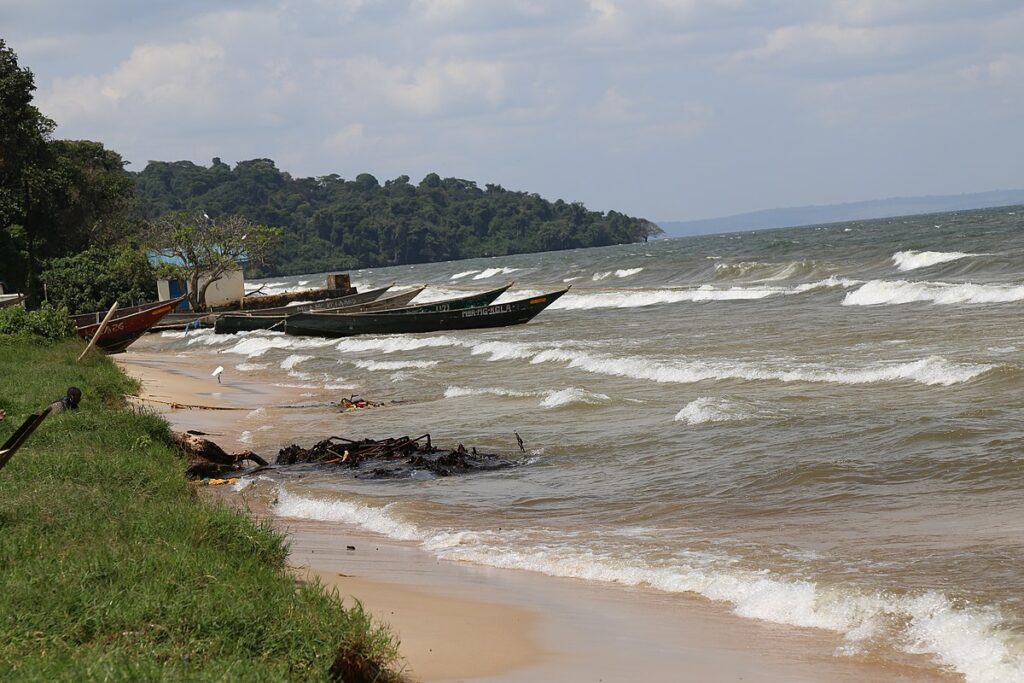
Lake Victoria, the largest freshwater lake in Africa, is best known for its massive Nile perch, a hard-fighting predator that can weigh over 200 pounds. With scenic shorelines and rich biodiversity, fishing here is a blend of relaxation and adventure.
- Fish Species: Nile perch, tilapia, catfish, and lungfish.
- Expected Budget: Local fishing tours start at $50-$150 per day, while upscale fishing lodges cost $1,000-$2,500 per week.
- Random Fact: Lake Victoria is the largest tropical lake in the world and is shared by three countries—Tanzania, Uganda, and Kenya.
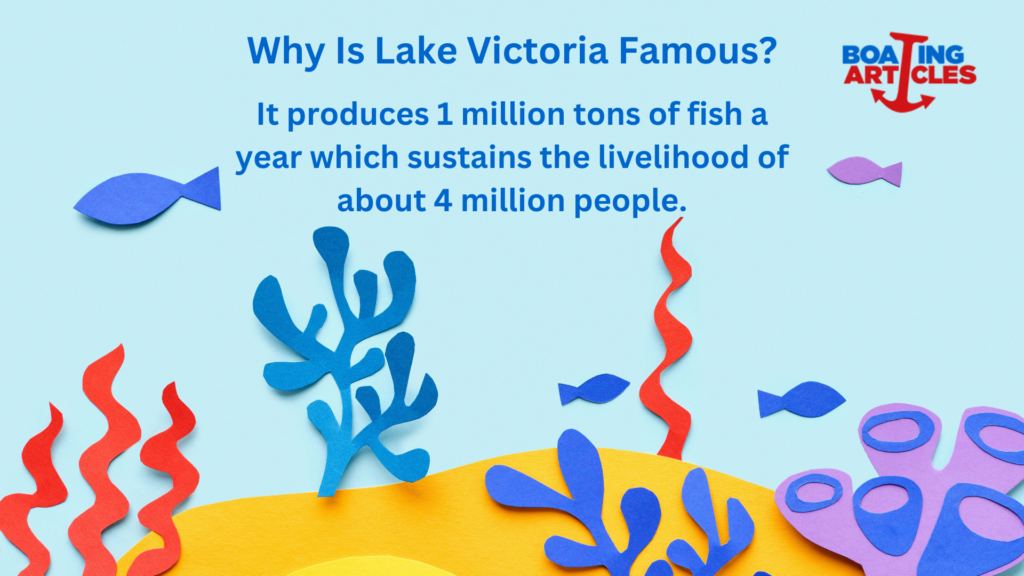
Best Times to Fish (By Species & Season)
| Species | Best Months | Peak Time |
|---|---|---|
| Nile Perch | June – October, December – March | July – September & January – March |
| Tilapia | Year-round | Warmer months (September – May) |
| Catfish | Year-round | Rainy season (March – May, October – November) |
| Tiger Fish | August – November | September – October |
🟢 Best Overall Time for Most Fishing: June – October & December – March
🔵 Best Time for Nile Perch: July – September & January – March
🌧️ Rainy Season: March – May, October – November (better for Catfish, but can be difficult for boat fishing)
Best Fishing Spots on Lake Victoria
1. Mwanza (Tanzania) – Nile Perch Capital
✅ Best for: Nile Perch, Tilapia, Catfish
✅ Why?
- Huge Nile Perch (over 100kg/220lbs!).
- Good for both deep-water and shore fishing.
- Many fishing lodges & charters available.
📍 Top Fishing Areas:
- Rubondo Island National Park (Best for Nile Perch)
- Mwanza Gulf (Great for Tilapia & Catfish)
- Ukerewe Island (Remote fishing experience)
2. Ssese Islands (Uganda) – Scenic Fishing Paradise
✅ Best for: Nile Perch, Tilapia
✅ Why?
- Tropical islands with great fishing spots.
- Calm waters ideal for small boats & shore fishing.
- Good accommodation options.
📍 Top Fishing Areas:
- Bugala Island (Best for Nile Perch)
- Bukasa Island (Remote & less crowded)
- Kalangala (Great mix of Nile Perch & Tilapia)
3. Kisumu (Kenya) – Best for Local & Sport Fishing
✅ Best for: Nile Perch, Tilapia, Catfish
✅ Why?
- Kenya’s top fishing town on Lake Victoria.
- Great access to deep & shallow water fishing.
- Active fishing community for boat rentals.
📍 Top Fishing Areas:
- Dunga Beach (Traditional fishing & fresh fish markets)
- Ndere Island National Park (Great for Nile Perch & Tilapia)
- Mbita & Rusinga Island (Scenic fishing locations)
4. Bukoba (Tanzania) – Off-the-Beaten-Path Fishing
✅ Best for: Nile Perch, Tilapia, Catfish
✅ Why?
- Less touristy than Mwanza or Uganda.
- Great for traditional fishing experiences.
- Good night fishing for Nile Perch.
📍 Top Fishing Areas:
- Kagera River Mouth (Great for Catfish & Nile Perch)
- Bukoba Bay (Calm waters for Tilapia fishing)
5. Jinja (Uganda) – Where the Nile Begins
✅ Best for: Nile Perch, Tiger Fish
✅ Why?
- Source of the Nile River = excellent freshwater fishing.
- Best place for Tiger Fish in Lake Victoria basin.
- Close to great fishing lodges.
📍 Top Fishing Areas:
- Near the Owen Falls Dam (Nile Perch hotspot)
- Around Ripon Falls (Great for Tiger Fish & Perch)
How to Store Your Catch Properly
Catching fish is only part of the equation—storing it properly ensures freshness and great taste. Here are some key methods based on the image below (from left to right):
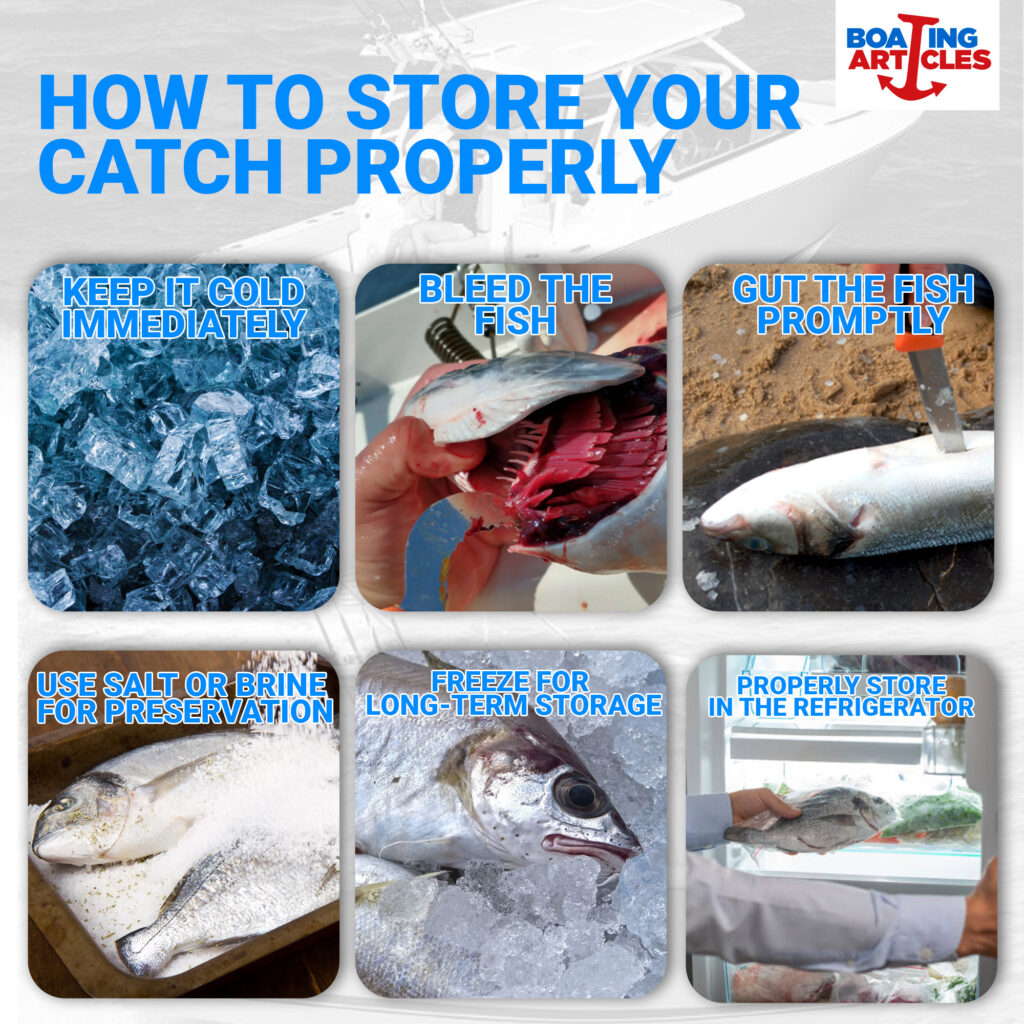
- Once you land a fish, place it in a cooler with ice or an insulated fish kill bag. The ideal storage temperature is 32°F (0°C) to slow bacterial growth and maintain quality.
- For species like tuna and salmon, bleeding the fish right after the catch improves taste and shelf life. Cut the gills and let the blood drain in water for a cleaner fillet.
- Removing the guts as soon as possible prevents spoilage and enhances freshness. Use a sharp knife to cleanly remove the internal organs and rinse the cavity thoroughly.
- If refrigeration isn't immediately available, soaking the fish in a saltwater brine helps preserve its quality. This method is often used for longer storage before freezing.
- For extended storage, clean and fillet the fish, then vacuum-seal or wrap it in freezer-safe bags before placing it in a deep freezer. Label each package with the date to track freshness.
- If you plan to eat the fish within 2-3 days, store it in the refrigerator on crushed ice in a perforated container to allow drainage. Cover the fish to prevent drying out.
Conclusion
Fishing offers a rewarding experience, but ensuring your catch remains fresh is just as important. Whether you're fishing in the wild waters of Alaska or the warm shores of Australia, following these storage techniques will help you enjoy the best flavors from your hard-earned catch!
